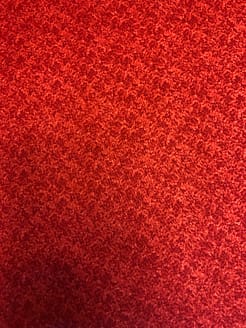Read words, faces, expressions, palms – sure! But reading color? What exactly is that?
Over the holidays, I took advantage of some of the clearance sales and increased my stash – my husband may argue that it was completely unnecessary… Regardless, I had several boxes of assorted fabrics arrive on our front porch.
Determined to keep my sewing area somewhat organized, I set out to put the fabric away in a manner that I could quickly find it again, without tearing apart my storage area. I enlisted my son and his girlfriend to help me get it done. I explained that we would organize the fabric by color and put like colors in labeled boxes. As they dutifully pulled out the fabric, they noticed that most of it had at least two colors. Some had seven or eight. How were they supposed to decide which pile to put it in? That is when I taught them about “reading color.”
Have you noticed that when you stand close to a fabric, you see all of the small designs and each color? But when you step away, that detail fades, even with 20/20 vision. When that detail gets lost, most fabrics will have a predominant color. That predominant color is what you read. I say most fabrics, because some very busy fabrics will always read rainbow rather than one color! With this in mind, we made quick work of the organization.
Here are three examples from Connecting Threads that we organized for the stash. What colors do they “read” to you? The one on the left is probably the easiest because it has a few shades of red, so it reads red. The middle one is a bit more difficult. It has an ivory background with a dark grey and red pattern on it. From a distance, the background color takes over, so it reads ivory (or a shade of it). The one on the right is probably the hardest. It has two shades of red, ivory, two shades of grey and black. When you step back, the black background turns a bit grey, so it could read either black or grey. Either way the red and ivory disappear. The lesson in reading color is to take a step back and see what happens.



Reading colors not only helps with stash organization, but also picking colors for your quilt. Traditional fabrics have a register on the selvedge that can help you pick the coordinating colors. But how about batiks? They don’t have a register, so you will need to “read” the colors for your quilt.
Happy Quilting
Laureen
